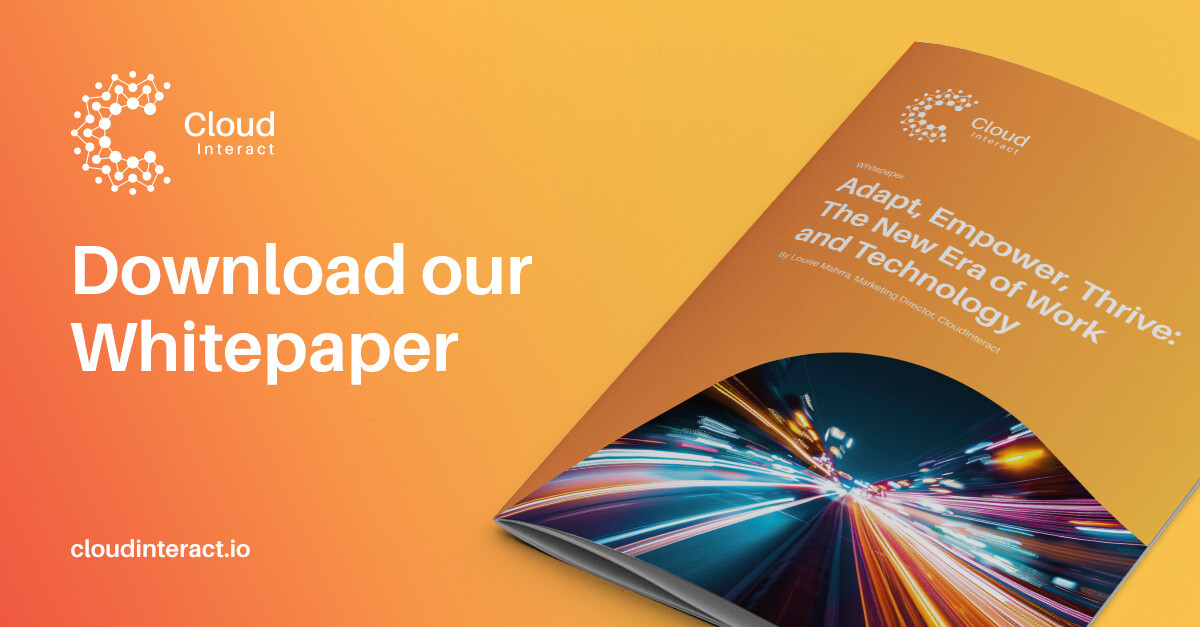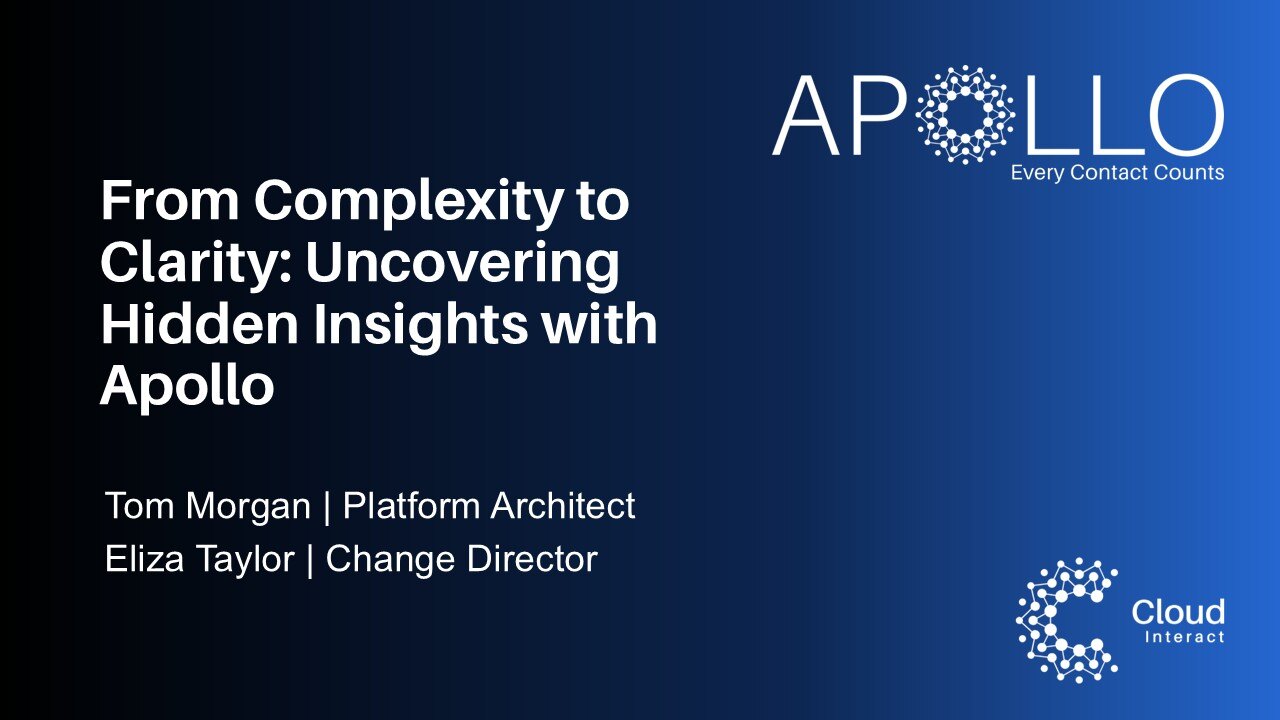
Welcome to our new series: Momentum: The Change Journey!
Change isn’t just about new technology or processes - it’s about people. Momentum: The Change Journey is a series dedicated to unlocking the power of effective change management, helping organisations move from resistance to readiness, and ensuring that transformation sticks. Through expert insights, practical strategies, and real-world stories, we’ll explore how to build adoption momentum and create lasting impact.
I’ve got to be honest, sometimes leading change can feel like herding cats through a maze in a thunderstorm. Because business never stays the same, even similar initiatives can play out in very different ways. So, I want to talk about some real-world lessons that I’ve picked up along the way.
Eliza Taylor | Change Director
The Rollercoaster of Change
 Change is the only constant, and this goes for your plans too. It’s essential to have a solid strategy and a well-crafted plan but be ready to adjust and adapt on the fly.
Change is the only constant, and this goes for your plans too. It’s essential to have a solid strategy and a well-crafted plan but be ready to adjust and adapt on the fly.
It’s these times of crisis that really shape how people perceive your change. I’ve had projects where a series of just-managed-disasters were spoken of positively in years to come. I gained more grey hairs, and I felt like we’d barely made it by the skin of our teeth – but I got comments afterwards about how it was one of the best managed changes the employees had ever been through – that they couldn’t believe the amount of time and support we had for them, even though it wasn’t a perfectly smooth ride.
It’s really tempting to go for the short-term fix, or the knee-jerk reaction in times of crisis. But if you don’t force yourself to get some perspective and think strategically, you’ll create more problems down the line. So, if you’re like me, and react best when you feel in control, make sure that you have backup plans for emergencies. Figure out the most important parts of your change plan and decide in advance what options you have in the case of any…hiccups.
Miscommunication
 Sometimes it’s easy to overlook the team delivering the change. We get so involved in mapping, assessing and communicating with the impacted employees that we forget about our own people.
Sometimes it’s easy to overlook the team delivering the change. We get so involved in mapping, assessing and communicating with the impacted employees that we forget about our own people.
Project teams are usually a collaborative force, drawn together from a couple of different parts of the business, perhaps with loaned, part-time or contractual resources thrown in. Do you have robust systems of communication and collaboration in place for your internal team? Does everyone know who is doing what, for who, and when?
If you can engineer a new way of working for others, you can put in place a few simple controls and checkpoints to keep your own crew up-to-date, aligned and motivated.
Fail to do this and you’ll find challenges harder to deal with and will probably create a few unnecessary ones of your own that could have been avoided. You wouldn’t believe the number of mishaps that could be avoided if the project team were better aligned.
People aren’t perfect
No one has an unlimited budget (but if you know someone who does, introduce me - I’ve got some great ideas for spending it)!
In reality, even the best-planned changes won't be perfect. This often makes people feel like imposters because there's a big gap between what theories, research, and blogs say and what's actually doable. This can make us feel pretty inadequate.
But don’t worry; everyone works with limited teams, budgets, and resources. The trick is in how you use them. That’s where one of the best tools in your arsenal should come into play – the change impact assessment. Use the impact assessment to figure out where your most critical factors are – the biggest risks, potential impacts, and what could derail your project.
Here are a few simple questions – if you can’t answer them, then you aren’t ready for your change:
- Who will be impacted by the change – exactly how many people, in how many teams, and in which parts of the business (and which locations)?
- How much do they know about the change? Who are they mostly likely to listen/pay attention to at work – what are those people telling them about the change?
- Out of all the roles affected by the change – which one is most impacted (i.e. biggest difference to their day to day) and which one is most important to the business (i.e. biggest business risk)? Hint: these may not be the same!
It may seem like a lot of detail but if your project doesn’t have this info you’re flying blind, making it way harder to manage resources efficiently and avoid last-minute crises. This can hurt the overall success of what could be an amazing change initiative.
Power players
Outside of your project team, there are some key people who you need to focus on because they can make your change infinitely easier (or harder).
The Top Dog
- First up is an engaged Executive. Find the most senior person who cares about what you’re doing – this may be the project Executive Sponsor, or their boss, or the head honcho of the whole place. This is your ‘big gun’ – don’t expect them to be in the details, but they’ll launch you off the starting line and can perk up an initiative that’s flagging in the middle.
- Can you deliver change without this Executive? Yes. But it’ll feel like you’re doing it with lead balloons tied to your feet.
Business Collaborators
- Next, we have your stakeholders. These are key people across the impacted business who may not have the final say but are going to have a strong opinion and probably won’t be shy about giving it. They have seniority and expertise in the areas you’re affecting, and you need to work closely with them to get the green light.
- In my personal opinion, “managing stakeholders” sets things off on the wrong foot. “Engaging stakeholders” would be a better start – if these experts and key representatives aren’t convinced about your change, then you’re about to go off the rails. When they believe in what you’re doing, stakeholders can be powerful (and essential) amplifiers.
Influencers
- Finally, let's talk about team dynamics. Think back to every team you’ve ever worked with, and you’ll soon find a few key characters reappearing – the person who was always keen on new things, and the deeply entrenched skeptic. Now think about how often their strong opinions held sway with the rest of the team who were mostly on the fence.
- Focus your efforts tapping into the enthusiasts. Boost their voices – give them the tools, information and support they need to be advocates for your change, and you’ll positively influence the rest of the team (although the skeptic might never get onboard). These are your early adopters, your change agents, your champions.
While you might pull off successful change without these groups, having them involved makes everything easier, smoother, and way more effective.
Where’s the Kool-Aid?
 As change leaders, it’s critical to believe in the change we're advocating – we must “drink our own Kool-Aid”. If we don't, how can we expect others to? Share your vision, your passion, and your belief in the change. And if you don’t believe in the change, then work out why and fix it. Positivity is infectious so celebrate publicly and often, even if the wins seem small.
As change leaders, it’s critical to believe in the change we're advocating – we must “drink our own Kool-Aid”. If we don't, how can we expect others to? Share your vision, your passion, and your belief in the change. And if you don’t believe in the change, then work out why and fix it. Positivity is infectious so celebrate publicly and often, even if the wins seem small.
Leading change in complex organizations isn’t for the faint-hearted. It requires resilience, adaptability, and a whole lot of heart. Remember, it’s not about having the perfect resources or time. It’s about making the most of what you have, prioritising effectively, and celebrating every step forward.
So, to all the change leaders out there, keep pushing, keep believing, and keep celebrating those small victories. You’ve got this!
If you're interested in taking advantage of our free 30-minute strategy session, or you want to take me up on the coffee offer, book your session below, or you can use good old-fashioned email to drop me a note: eliza.taylor@cloudinteract.io





